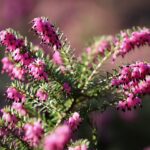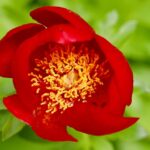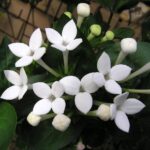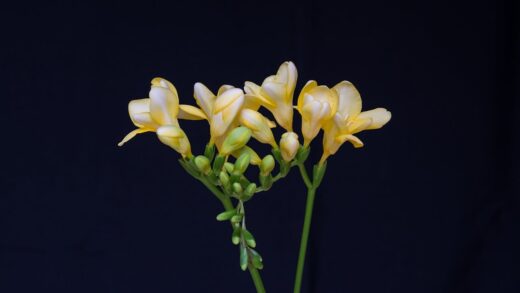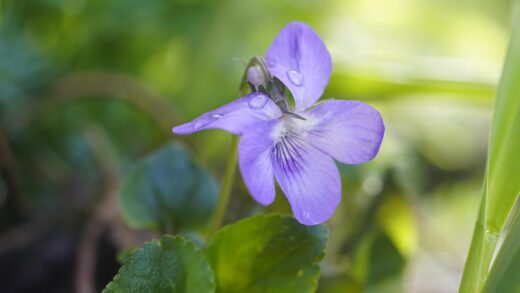To sustain its large, vibrant, and often intricately patterned leaves, the Dieffenbachia requires a consistent supply of essential nutrients throughout its active growing season. While the potting soil provides an initial reservoir of minerals, this supply is finite and becomes depleted over time as the plant absorbs them for its metabolic processes. Fertilization is the crucial practice of replenishing these nutrients, effectively feeding the plant so it has the building blocks necessary for robust growth, strong stems, and the brilliant foliage for which it is prized. Understanding what, when, and how to feed a Dieffenbachia is just as important as mastering its watering and light requirements.
A well-formulated fertilization plan is not about applying nutrients indiscriminately but about providing a balanced diet that meets the plant’s specific needs. The primary macronutrients—nitrogen (N), phosphorus (P), and potassium (K)—play distinct and vital roles. Nitrogen is essential for lush, green leaf growth; phosphorus supports strong root development and energy transfer; and potassium contributes to overall plant vigor and disease resistance. A fertilizer with a balanced ratio of these nutrients is typically ideal for foliage plants like the Dieffenbachia, ensuring that all aspects of its health are supported.
The timing and frequency of fertilization are critical to avoid both underfeeding and overfeeding. The plant’s nutrient requirements are directly linked to its growth rate, which is highest during the long, bright days of spring and summer. During this period, regular feeding supports the rapid production of new leaves. Conversely, as daylight hours shorten and temperatures cool in autumn and winter, the plant’s growth slows dramatically, and its need for nutrients diminishes. Continuing to fertilize a dormant or semi-dormant plant can be harmful, as the unused mineral salts can accumulate in the soil and damage the root system.
Ultimately, successful fertilization is a matter of balance and observation. By selecting an appropriate fertilizer, applying it at the right strength and frequency according to the season, and watching the plant for signs of its nutritional status, one can ensure the Dieffenbachia has the fuel it needs to thrive. This proactive approach to plant nutrition will be rewarded with a continuously impressive display of healthy, magnificent foliage, which is the ultimate goal of cultivating this stunning tropical specimen.
Understanding essential plant nutrients
Plants, like all living organisms, require a range of essential nutrients to grow and function properly. These are typically categorized into macronutrients, which are needed in larger quantities, and micronutrients, which are required in much smaller, trace amounts, but are no less important. For a Dieffenbachia, the three primary macronutrients found in most commercial fertilizers are nitrogen (N), phosphorus (P), and potassium (K). Each plays a critical, distinct role in the plant’s physiology. Nitrogen is arguably the most important for a foliage plant, as it is a primary component of chlorophyll, the molecule responsible for photosynthesis and the green color of the leaves. A sufficient supply of nitrogen promotes vigorous, lush foliar growth.
Phosphorus (P) is vital for energy transfer within the plant and is a key component of DNA and RNA. It plays a crucial role in the development of a strong and healthy root system, which is the foundation for the entire plant. Phosphorus also aids in flower and seed production, though this is less of a concern for Dieffenbachia grown primarily for their leaves. Potassium (K) acts as a regulator for many of the plant’s internal processes, including water uptake, enzyme activation, and the opening and closing of stomata on the leaves. It contributes to the overall strength and sturdiness of the plant, improving its resistance to diseases, pests, and environmental stress.
In addition to the primary macronutrients, plants also need secondary macronutrients like calcium, magnesium, and sulfur. Calcium is important for cell wall structure, while magnesium is the central atom in the chlorophyll molecule. Micronutrients, or trace elements, include iron, manganese, zinc, copper, boron, and molybdenum. While needed in only tiny quantities, a deficiency in any one of these can lead to specific health problems, such as chlorosis (yellowing of leaves) or stunted growth. A good quality, complete houseplant fertilizer will contain a balanced spectrum of both macronutrients and essential micronutrients.
The nutrient ratios in a fertilizer are expressed as three numbers, known as the N-P-K ratio, which represent the percentage by weight of nitrogen, phosphorus, and potassium. For a foliage plant like Dieffenbachia, a fertilizer with a balanced ratio, such as 10-10-10, or one that is slightly higher in nitrogen, like a 3-1-2 ratio (e.g., 9-3-6), is generally recommended. This ensures that the plant receives ample nitrogen to support leaf production, along with sufficient phosphorus and potassium for root health and overall vigor.
Choosing the right type of fertilizer
When selecting a fertilizer for a Dieffenbachia, growers are faced with several options, primarily categorized by their formulation: liquid, granular, or slow-release. Liquid fertilizers are one of the most popular choices for houseplants. They are mixed with water and applied during a regular watering session, providing a quick and readily available source of nutrients to the plant’s roots. This method allows for precise control over the concentration and frequency of feeding, making it easy to adjust the feeding regimen according to the plant’s seasonal needs. For Dieffenbachia, it is often recommended to dilute the liquid fertilizer to half the strength indicated on the packaging to avoid the risk of over-fertilization and root burn.
Slow-release fertilizers offer a more hands-off approach to plant nutrition. These come in the form of pellets or prills that are mixed into the top layer of the soil or added during repotting. Each pellet is coated with a semi-permeable material that gradually releases nutrients into the soil every time the plant is watered. A single application can last for several months, providing a steady, low-level supply of food to the plant. This method is convenient and reduces the risk of sudden nutrient overload, but it offers less control over the timing of nutrient delivery compared to liquid feeds.
Granular fertilizers are similar to slow-release types but typically break down more quickly. They are sprinkled onto the soil surface and then watered in. While effective, they can sometimes result in an uneven distribution of nutrients and carry a higher risk of burning the plant’s stem or shallow roots if not applied carefully. For potted Dieffenbachia, liquid or slow-release fertilizers are generally considered safer and more effective options, providing more consistent and controlled nutrition.
Another important consideration is whether to use a synthetic or an organic fertilizer. Synthetic fertilizers are formulated with precise, manufactured mineral salts and provide nutrients in a form that is immediately available to the plant. Organic fertilizers, such as fish emulsion, seaweed extract, or worm castings, are derived from natural materials. They work by enriching the soil and feeding the beneficial microbes, which then break down the organic matter and release nutrients more slowly to the plant. Both types can be effective, and the choice often comes down to personal preference and gardening philosophy.
Fertilization schedule and application
The key to a successful fertilization routine for Dieffenbachia is to align it with the plant’s natural growth cycle. The plant’s period of active growth occurs during the spring and summer months, when daylight hours are longer and temperatures are warmer. This is when the plant is actively producing new leaves and has the highest demand for nutrients. During this time, it is beneficial to fertilize the plant regularly to support this vigorous growth. A common and effective schedule is to apply a half-strength balanced liquid fertilizer once every four to six weeks.
As autumn approaches and the days grow shorter, the Dieffenbachia’s growth will naturally begin to slow down. The plant enters a semi-dormant state during the winter months, conserving its energy rather than putting out new growth. During this rest period, its need for supplemental nutrients is drastically reduced. Therefore, it is crucial to adjust the fertilization schedule accordingly. Most growers cease fertilizing completely from late autumn through winter. Resuming the feeding schedule in the spring, as new growth begins to appear, signals that the plant is active again and ready to utilize the extra nutrients.
Proper application technique is essential to prevent damage to the plant. A critical rule is to never apply fertilizer to dry soil. Fertilizing a thirsty plant can cause the concentrated mineral salts to draw moisture out of the roots, leading to chemical burn and significant root damage. Always water the plant thoroughly with plain water a day before or at least a few hours before you plan to fertilize. This ensures the soil is moist and the roots are hydrated, allowing them to absorb the nutrients safely and effectively.
When using a liquid fertilizer, mix it with water according to the package directions, or more commonly, at half the recommended strength for houseplants like Dieffenbachia. Apply the fertilizer solution evenly to the soil surface, allowing it to soak down to the root zone, just as you would with a normal watering. Avoid splashing the fertilizer directly onto the leaves, although it is generally harmless, some formulations can cause leaf spotting. Consistency and moderation are the pillars of a good fertilization practice; it is always better to slightly under-fertilize than to over-fertilize.
Recognizing nutrient deficiencies and toxicities
Observing the leaves of a Dieffenbachia can provide valuable clues about its nutritional health. A nutrient deficiency occurs when the plant is not receiving an adequate supply of an essential element, and this often manifests in specific visual symptoms. A general yellowing of the older, lower leaves, for example, is a classic sign of a nitrogen deficiency, as the plant will move this mobile nutrient from old growth to support new growth. If new leaves are emerging pale or yellow while older leaves remain green, this could indicate a deficiency in an immobile nutrient like iron or sulfur, a condition known as chlorosis.
Stunted growth and small new leaves can be an indicator of a general lack of nutrients, particularly if the plant has not been fertilized for a long time or has been in the same potting mix for several years. A phosphorus deficiency might result in a dull, dark green coloration or even a purplish tint to the leaves, although this is less common in indoor foliage plants. A potassium deficiency can cause yellowing and browning along the edges of the older leaves. Recognizing these signs early allows you to correct the issue by providing a balanced fertilizer before the problem becomes severe.
Conversely, over-fertilization, or nutrient toxicity, can be even more damaging than a deficiency. The most common sign is a buildup of white, crusty salt deposits on the surface of the soil or around the rim of the pot. The plant’s leaves may develop brown, scorched-looking tips and edges, which is a result of the roots being burned by the excess mineral salts. In severe cases, the lower leaves may yellow and drop, growth will be stunted, and the entire plant may wilt, even if the soil is moist, because the damaged roots are unable to absorb water.
If you suspect you have over-fertilized your Dieffenbachia, it is important to act to flush the excess salts from the soil. Take the plant to a sink or shower and let a large volume of lukewarm water run slowly through the pot for several minutes. This process, known as leaching, helps to wash away the accumulated mineral salts. Allow the pot to drain completely, and then refrain from fertilizing again for at least a month or two, giving the plant ample time to recover. Always remember the mantra: “feed weakly, weekly” or, in the case of Dieffenbachia, “feed weakly, monthly” during the growing season.
Organic vs. synthetic fertilizer options
The debate between using organic and synthetic fertilizers is a common one in the world of horticulture, and both have their distinct advantages for cultivating a Dieffenbachia. Synthetic fertilizers are created from refined mineral salts and are designed to provide nutrients in a form that is immediately available for plant uptake. This means that when you apply a synthetic liquid fertilizer, the nitrogen, phosphorus, and potassium are instantly accessible to the roots, often resulting in a rapid growth response. The nutrient content is precisely controlled and stated on the label, which allows for very accurate feeding.
The primary benefits of synthetic fertilizers are their speed of action, convenience, and affordability. They are widely available and come in various formulations tailored to different types of plants. However, their concentrated nature carries a higher risk of over-fertilization and root burn if not used carefully. The repeated use of synthetic fertilizers can also lead to a buildup of mineral salts in the potting soil over time, which can eventually harm the plant and may necessitate periodic flushing of the soil to remove these accumulations. They also do little to improve the long-term health and structure of the soil itself.
Organic fertilizers, in contrast, are derived from natural sources such as plant matter (like seaweed or alfalfa meal), animal products (like fish emulsion or bone meal), or microbial sources (like worm castings). These materials release their nutrients more slowly as they are broken down by microorganisms in the soil. This process not only feeds the plant but also feeds the beneficial soil biome, which can improve soil structure, aeration, and moisture retention over the long term. This slow-release mechanism makes it much more difficult to over-fertilize and burn a plant with organic options.
While organic fertilizers are excellent for building healthy soil and provide a more “natural” approach to plant nutrition, they can sometimes be slower to act, and their exact nutrient content can be less precise than their synthetic counterparts. Some organic products, like fish emulsion, can also have a strong, albeit temporary, odor. For the average Dieffenbachia owner, a balanced approach can be very effective. One might use a slow-release organic fertilizer like worm castings mixed into the soil during repotting to build a healthy soil foundation, supplemented by occasional feedings with a diluted synthetic liquid fertilizer during the peak growing season to provide a quick boost.

